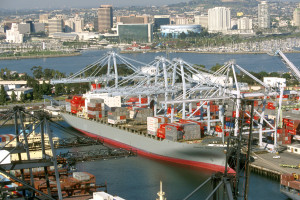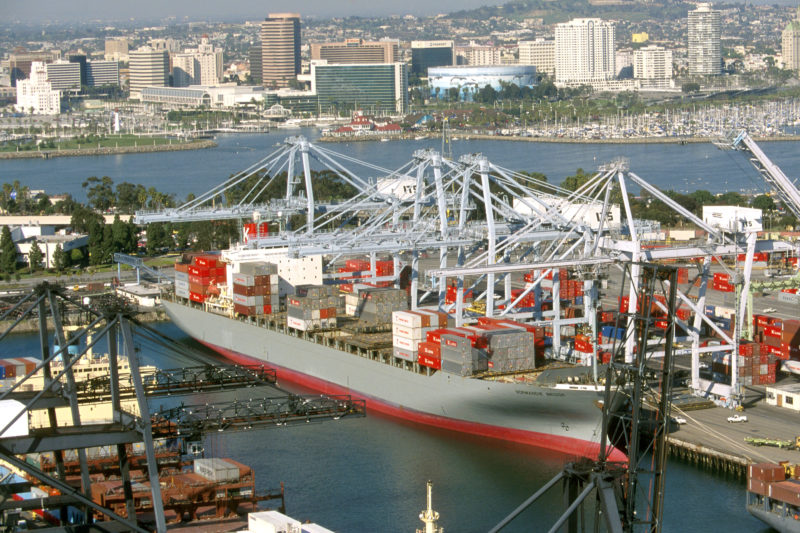 Three major ports on the U.S. West Coast reported volume contraction in January as the backlog mounted and terminal operators and dockworkers continued to wrangle over labor contract terms.
Three major ports on the U.S. West Coast reported volume contraction in January as the backlog mounted and terminal operators and dockworkers continued to wrangle over labor contract terms.
Port executives at Long Beach, Seattle, and Tacoma called on the Pacific Maritime Association (PMA) and International Longshore and Warehouse Union (ILWU) to settle their differences, as they released figures showing the impact of the congestion on operations.
At Long Beach, the lingering congestion drove down container cargo by 18.8 percent in January compared to the same month last year, according to the port’s authorities.
Overall, 429,490 TEUs (twenty-foot equivalent units) of containerized cargo moved through the Port of Long Beach in January. Imports numbered 213,667 TEUs, a 23.5 percent decline from January 2014. Exports slid 19.6 percent to 98,462 TEUs. Empty containers declined 7.6 percent to 117,361 TEUs.
“The dramatic drop in cargo volume is due to congestion and contract issues plaguing the West Coast ports recently. Marine terminal management and longshore labor representatives have been negotiating a new contract for dock work for more than nine months. The Port of Long Beach is not part of the bargaining process,” said an official statement released by the port.
“We have been strongly urging the two parties to come to an agreement on a new contract, so that we can clear the backlog of cargo on the docks and the ships anchored off the coast,” said Port of Long Beach Chief Executive Jon Slangerup. “We are encouraged by recent progress through Federal mediation and are hopeful that the contract will be signed soon, so that the Port complex can focus on returning operations to a normal pace.”
Last year, against which 2015 is being compared, was the third busiest year in the port’s history with a total of 6.82 million TEUs.
Similarly, the ports of Seattle and Tacoma saw their combined container volumes fall 13 percent in January, continuing a trend that started in November.
The Puget Sound gateway handled 226,906 TEUs last month. Containerized imports plunged 21 percent to 89,982 TEUs, while exports dipped 7 percent to 81,213 TEUs. Domestic volumes to Alaska and Hawaii fell 7 percent to 55,711 TEUs.
“Issues related to ongoing contract negotiations between the Pacific Maritime Association and International Longshore and Warehouse Union began affecting cargo movement at U.S. West Coast ports in late October,” according to a statement from the Port of Seattle.
“The ports continue to press the PMA and ILWU to resolve the impasse in contract negotiations. While the ports do not have a seat at the negotiating table, we have been exercising the limited options available to try to mitigate impacts on our customers and to keep cargo moving.”
The two ports, which intend to form a Seaport Alliance, began reporting joint cargo volumes in December. Combined, the ports of Seattle and Tacoma are the third largest container gateway in North America.
Portland workers take leave
Meanwhile, workers at the Port of Oakland reportedly walked off the job for the day on Thursday even as PMA and ILWU representatives came back to the negotiating table together yesterday with U.S. Secretary of Labor Thomas Perez telling them to come to an agreement.
The two sides have refused to budge on the issue of arbitration. The employers insist on maintaining the current system in which the two parties must agree before removing any arbitrators, while the workers are demanding unilateral power over their firing.
Work pace at the West Coast ports remains slow, and around 30 ships are idling untended outside the terminals, with shippers, retailers, and manufacturers nationwide joining in the chorus to immediately resolve the damaging deadlock.
Photo courtesy of Port of Long Beach





